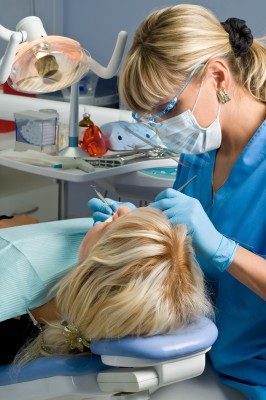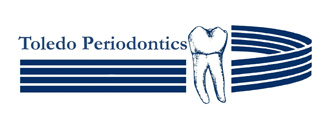Periodontal Maintenance

After having gum disease that was treated by periodontal surgery or with scaling and root planing therapy, more frequent dental cleanings are recommended. These cleanings are called “periodontal maintenance” and are a more complex procedure that will allow the hygienist to disrupt the bacteria above and below the gums.
The most recent research indicates that patients who maintain regular periodontal maintenance intervals (usually every 3 to 4 months) experience less attachment (bone) loss than patients who don’t. If undisturbed, bacteria will take approximately 9-11 weeks to recolonize. Once bacteria colonize, they are able to begin to infect and destroy the gums and bone around the teeth. Periodontal maintenance appointments at 12 week intervals allow the hygienist to remove and disrupt these harmful bacteria before they become destructive.
Ideally, we like to schedule an alternating appointment system, where you are seen twice a year at our office, and your general dentist sees you twice a year. We intensively focus on the health of your gums and bone, your homecare effectiveness and the effect of your periodontal health on your overall health.
Biological basis for Supportive Periodontal Therapy (SPT)
Position Paper AAP 1998: Supportive periodontal therapy is the preferred term used for periodontal maintenance or periodontal recall.
- Tooth loss decreases as SPT increases.
- 10 years following completion of regular periodontal therapy:
- Periodic PT decreases probing depths
- Decrease tooth loss
- In comparison to patients without SPT
- Progress of gingivitis to periodontal disease can be prevented or limited by patient oral hygiene or through SPT.
- Regular SPT intervals results in less attachment loss and loss of fewer teeth or no tooth loss.
- Patients rarely remove all plaque. SPT program reduces future attachment loss
- SPT provides periodontal monitoring of gingivitis to periodontal disease; as well as professional plaque removal for patients with a history of treated periodontal disease.
- Patients with history of periodontal disease require SPT since patient oral hygiene alone has not been shown to control attachment loss.
- Patients who follow regular SPT and still have progressive attachment loss may need antimicrobial agents.
- Patients who follow regular SPT and still have progressive attachment loss may need microbial analysis.
- Determining SPT interval and prediction of patient compliance is sometimes a mystery.
Frequency of SPT
- Studies include 2 weeks, 2-3 months, 3 mos., 4 mos., 4-6 mos. All studies conclude patients with previous periodontal disease should be seen 4 times a year.
- Decrease of progressive disease than those receiving SPT on a less frequent basis.
- Pathogenic levels of bacterial biofilm (plaque) return to pretreatment levels in 9-11 weeks. This varies among patients. Nevertheless, recommend a 3 months SPT interval.
Dictating factors for SPT interval:
Number of teeth
Patient cooperation
Oral Hygiene efficacy and compliance
Systemic health
Previous frequency of SPT
Instrument access
History of periodontal disease, distribution & depth of sulci.
